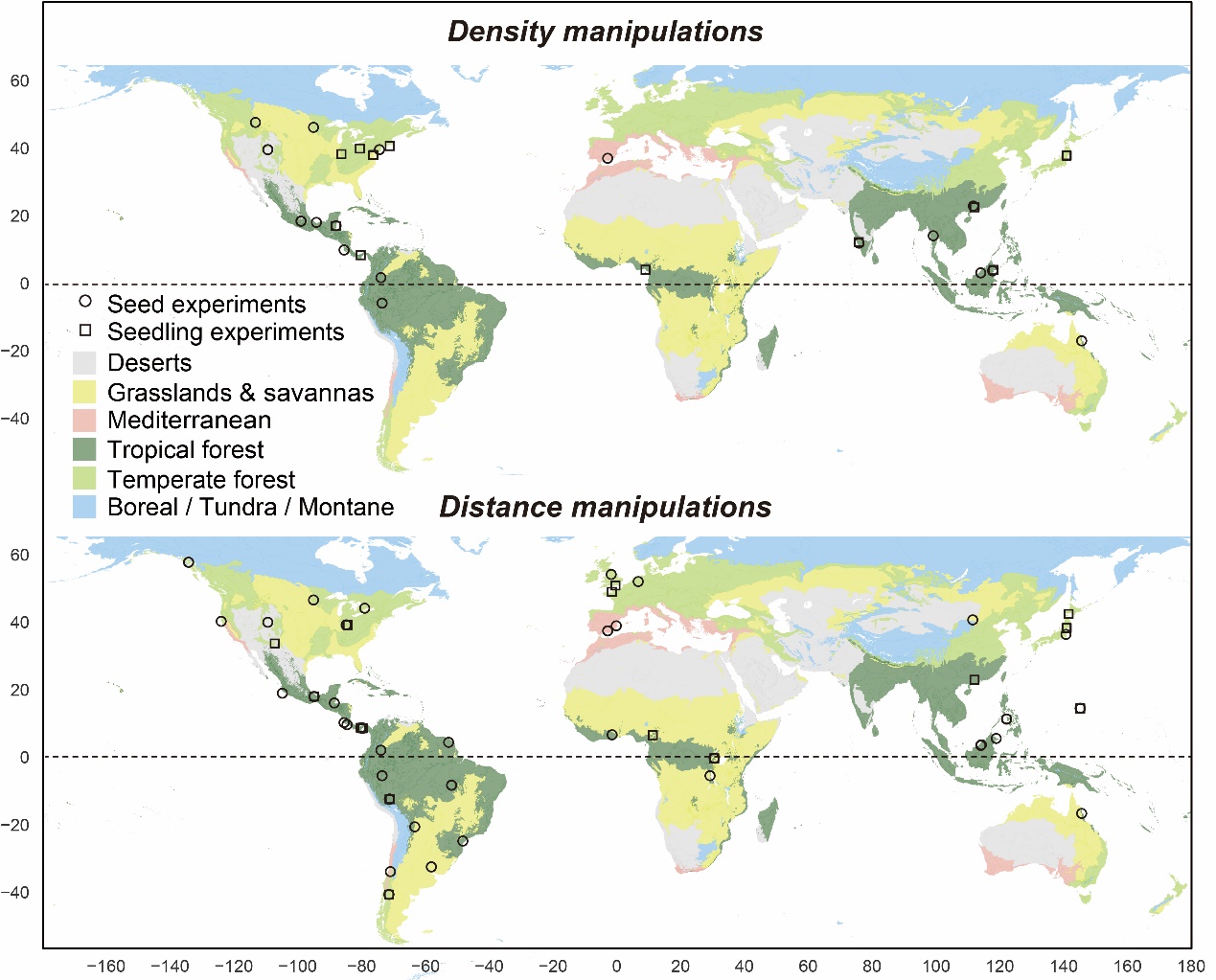The Janzen–Connell (J-C) hypothesis suggests that specialized natural enemies cause distance‐ or density‐dependent mortality among host plants and is regarded as an important mechanism for species coexistence. However, there remains significant debate over the generality and magnitude of J-C effects, especially its role in shaping macro-scale diversity patterns.
In a study published in Ecology Letters, researchers from Xishuangbanna Tropical Botanical Garden (XTBG) and their collaborators performed a meta‐analysis of experimental studies conducted under natural settings to date. They tried to evaluate how distance and density dependence vary among treatment, species and plant life stages.
The researchers evaluated the importance of J‐C effects by collating an up‐to‐date data set of manipulated conspecific distance- and density- dependent experiments for plant seed and seedlings worldwide. This is the third meta-analysis since Comita and colleagues’ seminal review in 2014 and Hyatt et al.’s meta-analysis work in 2003.
First, they test if the effect of conspecific negative distance or density dependence (CNDDD) were phylogenetically conserved. They found little evidence of overall conspecific distance‐dependent or density‐dependent mortality when grouping all types of manipulations. Their analysis also revealed very large variation in response among species, with 38.5% of species even showing positive responses to manipulations. Both density‐ and distance‐dependent mortality showed large variation within genera and families, suggesting that J‐C effects are not strongly phylogenetically conserved.
Moreover, they found CNDDD varied with plant life stages, with a strong signal of distance‐dependent mortality among seedlings but not seed experiments.
They finally evaluated if abiotic drivers explain differences in density‐ or distance‐dependent effects among studies (e.g. rainfall and latitude) and the effects of experimental duration and treatment intensity on the effect sizes. But there were no clear trends overall.
“We thus conclude that J‐C effects may not be as pervasive as widely thought and not generalizable across life stages. Nonetheless, there are strong effects of seedling distance-dependence in trees and this may contribute to forest spatial dynamics, local diversity and coexistence.” said Dr. SONG Xiaoyang, first author of the study.
“In this paper, we also reviewed the previous studies about CNDDD, there are still many knowledge gaps. We hope the researchers could focus on them in the future studies,” said Matthew Scott Luskin, another important contributor of the study.
Contact
SONG Xiaoyang Ph.D
Key Laboratory of Tropical Forest Ecology, Xishuangbanna Tropical Botanical Garden, Chinese Academy of Sciences, Mengla, Yunnan 666303, China
E-mail: songxiaoyang@xtbg.ac.cn
Geographical distribution of studies testing density-dependent and distance-dependent J-C effects included in this meta-analysis. Seed mortality experiments are plotted as unfilled circles, whereas seedling mortality experiments were plotted as filled squares.(Image by SONG Xiaoyang)

